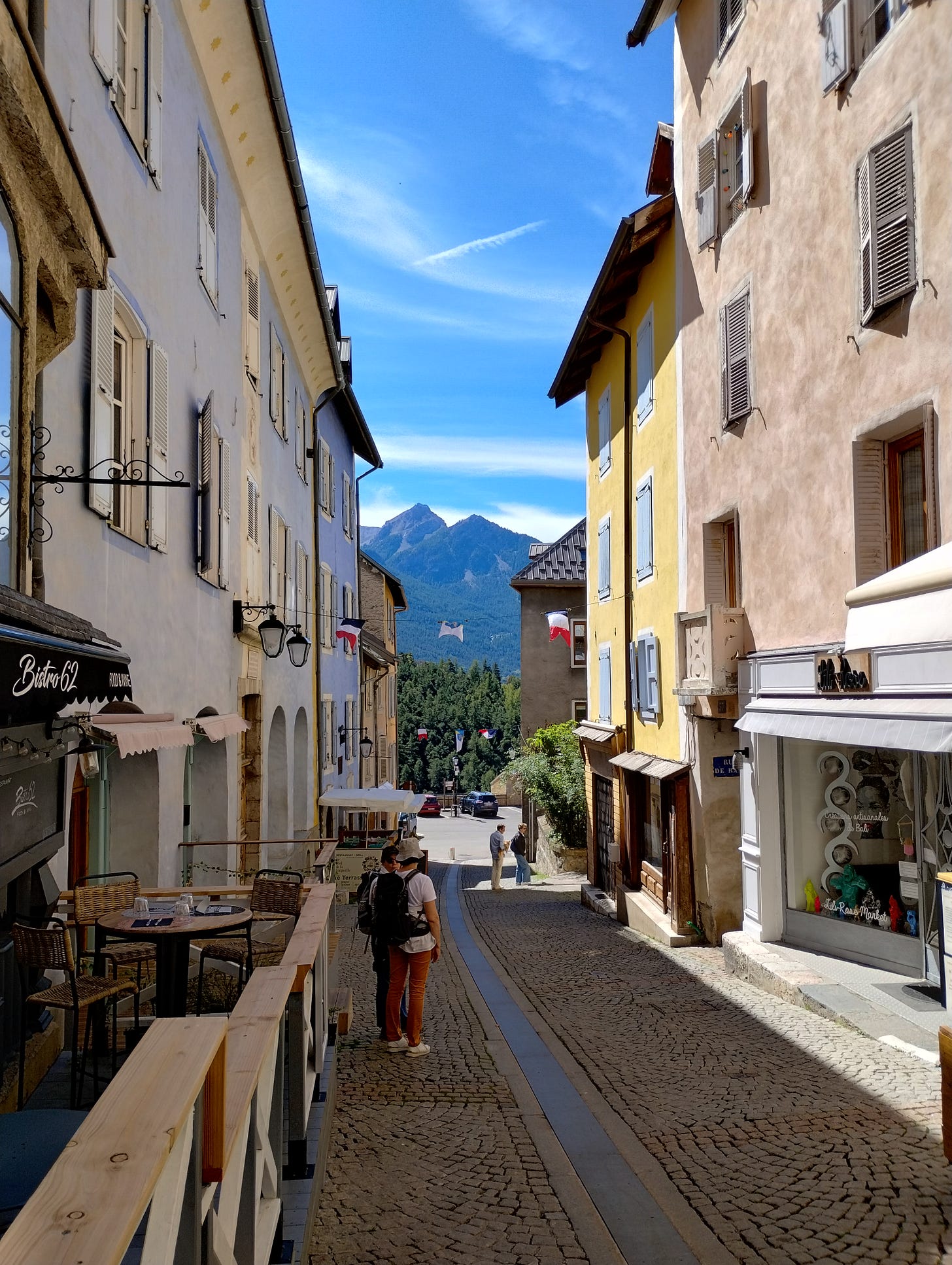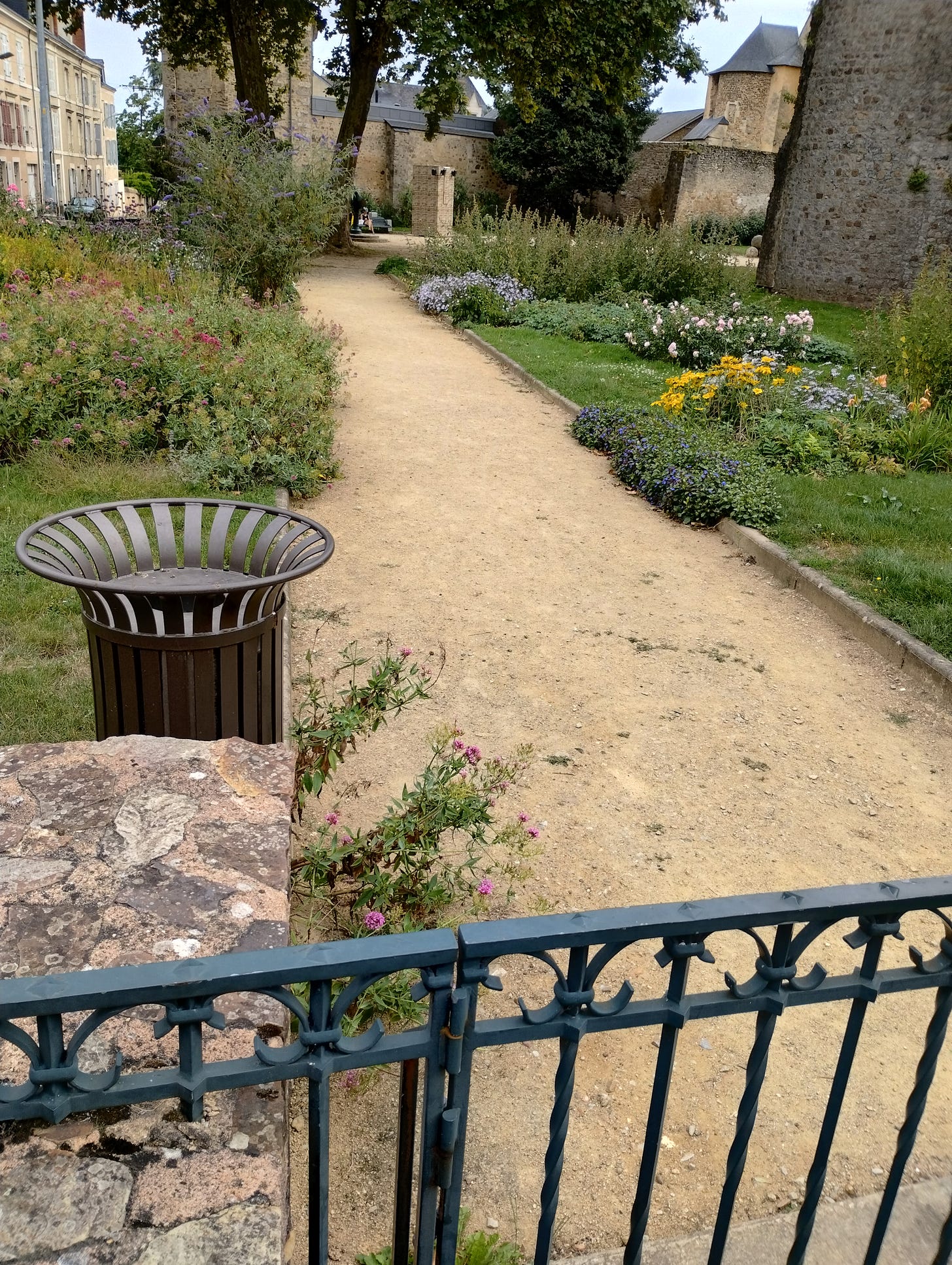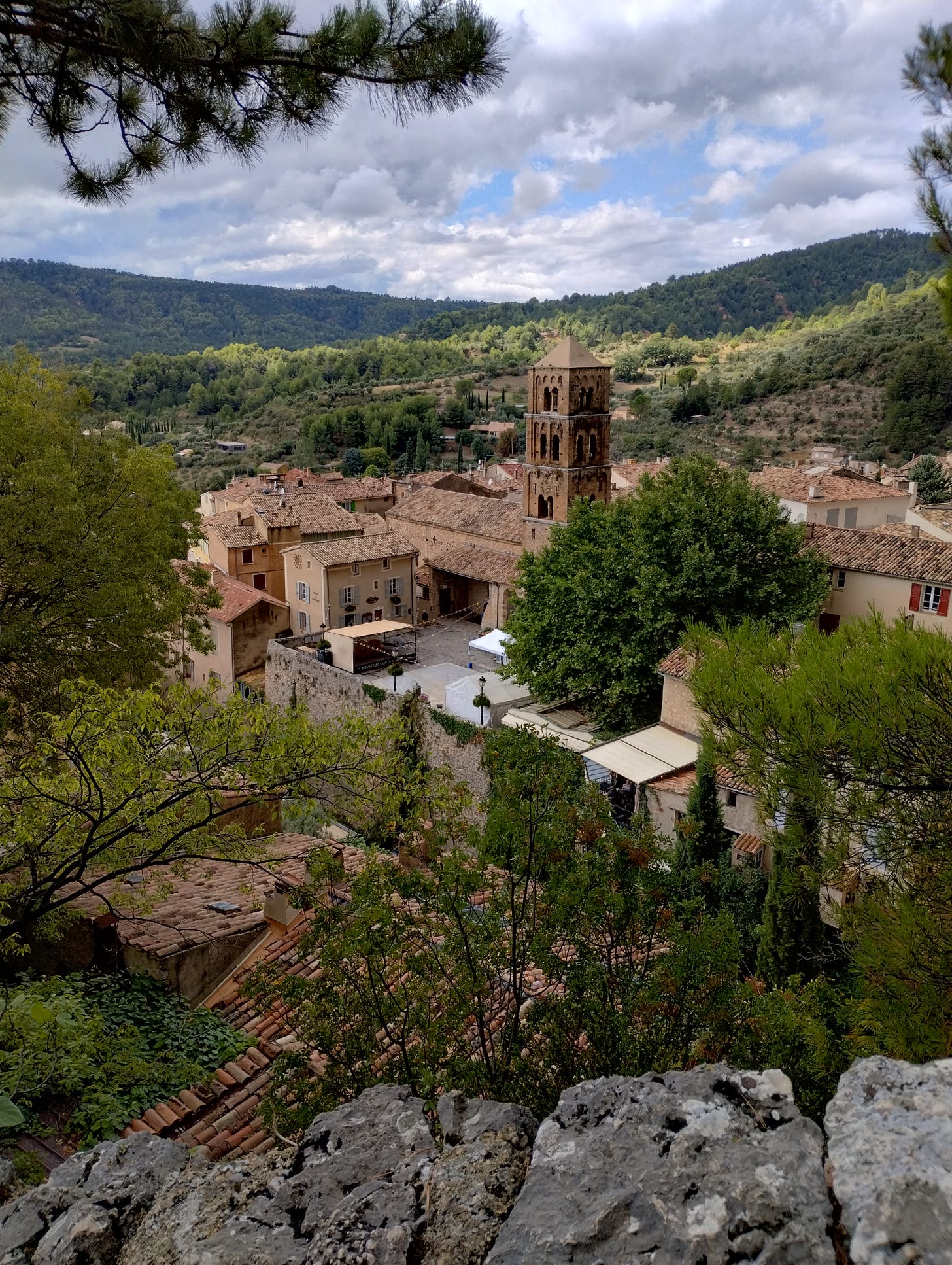Living in Human(e) Settlements
Physical environments and patterns of life
This will be news to almost no one, but the vast majority of spaces human beings inhabit in the United States have been planned and provisioned for vehicle traffic rather than human habitation. This spatial subordination of our human settlements to machine activity usually makes our surroundings ugly, unhealthy, and stressful.
A recent trip to France with my family was a reminder to me of what it feels like to inhabit spaces built for people rather than our machines (machines which are usually purpose-built for work and productivity rather than leisure). Of course, large parts of France are falling wholesale to the logic of machines and mass culture, but the bone structure of a civilization built around humans and their distinctive (and local) traditional culture is still visible. Actually, it's not just visible. Especially outside of the main urban centers, many, perhaps even most, people still enjoy a humane environment and sustain patterns of life that are wholesome and sane.
I have nothing substantial to add to the extensive and well-crafted arguments made by folks like Philip Bess at the Notre Dame School of Architecture or his colleagues throughout the New Urbanism movement about how to build more humane settlements. But while the memory is fresh I thought I'd describe a few wholesome aspects of the patterns of life we observed and how they were enabled by the cultural prejudices and physical environment and in which they occurred.
Walking
People walk. Most of the other points derive chiefly from this one. It is, I think, fundamentally important.
In urban environments and rural ones you'll see folks walking not just for leisure, but as a chief mode of conveyance for any purpose. They walk to work, to the market for shopping, to the bars for a drink, to the beach and back, or to the next village over for whatever reason they might have been going to the next village over. I didn't ask.
All this walking happened on a variety of surfaces: gravel paths through parks; narrow streets; wide pedestrian promenades; sidewalks; country roads; winding stairs; etc. Walkers were everywhere, and often in spaces that were reserved exclusively for walking or non-motorized conveyance. In spaces where there were also motorized vehicles, the drivers of the vehicles were on much closer footing to the pedestrians than I am used to in the USA. What I mean is that drivers and pedestrians there were engaged in the same kind of evaluation and negotiation about right of way, safety, and speed that I see generally occur exclusively between drivers. Because pedestrian activity in the US is generally rare and second rate, we control the relationship between drivers and walkers with machines and lights, removing the need for serious negotiation between the two.
Traffic needs wide roads, lots of parking, and the ability for large vehicles to get very close to buildings. These accommodations for machines tend to degrade the quality of the environment when considered as a human habitation. Humans need places to walk and gather that are scaled to the human senses in a variety of ways including speed, volume, and distance. Even where there are wide sidewalks, pedestrian activity adjacent to large roads occurs amidst the roar of engines that generally drown out efforts at conversation.
In France it was not uncommon for pedestrian paths and trails to occupy as much space as the roads made for vehicles. And even the parts of town made accessible for vehicles were sometimes roped-off for pedestrian access only in order to accommodate the regularly scheduled open-air markets where people do much of their shopping. These pedestrian zones often buzzed with activity, but it was unmachined human activity: folks walking, talking, and shopping amidst many others doing the same.
Of course, the French largely choose to live this way. Even if we were to build a better infrastructure for walkers, it would not itself change our highly sedentary and machine oriented culture whose iatrogenic medical interventions cripple more and more people yearly. On the other hand, there are probably many who would walk if the environment in which to do so was a little safer and saner
.
Don't be a wimp
In my opinion, a basic element of not being a wimp is thriving in your environment without excessive and dramatic technical intervention designed to facilitate your comfort. As it relates to an ambulatory culture there are two big areas in which we could be less wimpy.
Carrying things
As a consequence of all the walking, people in France were very often carrying bags with whatever they needed: books, produce, wine, etc. From a fitness point of view, walking while carrying weight is one of the healthiest low-impact and high-reward activities we can engage in. The willingness to walk and carry means that much of the physical infrastructure makes sense for those who walk and carry obviated the need for urban centers to cover themselves with the acres of barren blacktop for parking near supermarkets or other shopping. Yes, the trunk of a car makes the purchase and transport of a case of champagne easier, but a rack on your bike makes it feasible with less technical intervention required.
A side benefit related to the foot traffic and carrying culture is that the open-air markets facilitate small producers and businesses selling directly to customers. European policies can be a mess regarding business, but in this regard, their cultural prejudice toward the ambulatory represents an implicit resistance to the homogenizing effects of mass culture through megabusinesses killing-off small, independent producers.
Weather
This walking propaganda is all well and good you say, but what about when it’s raining? Yeah, they don’t care.
People carry umbrellas and wear rain jackets when it’s raining…and as far as I could tell, go about their business on foot in almost the exact same manner in the rain as in the sun. Parents walking their kids to school in the rain? Yes (and carrying the bags and books necessary for the day). Shopping? Yes, with umbrellas and bags for what they bought. Heading to work in a suit (in a downpour)? Yes, with an umbrella. Playing a game of pickup basketball after school (in an absolute deluge)? Yes…and it looked very fun.
I fear that most of us are pretty wimpy when it comes to facing the elements. (We live in the enlightened age of driving to the gym in order to walk on the treadmill.) The more we insulate ourselves against them, the less accustomed we become to dealing with them in a sensible way. This is true for rain, shade, and climate control. Our physical environments disregard the elements because we don’t need to work with them anymore. We can simply dominate them with our heavy-duty machines.
While air conditioning was rare in France, balconies, patios, shade awnings, and sensibly placed windows and shutters were abundant. The very things that make us think of the French built-environment as “charming” or “picturesque” we are generally unwilling to do because of the mild physical discomfort or inconvenience they might include.
Greeting
It is a matter of etiquette to greet a proprietor when you walk in and to “check-out” with him when you leave. Simple eye contact and a “bonjour monsieur” is enough, but it's important. What does this have to do with space? A small shop has a proprietor with whom this basic civilization-building custom can be (must be) enacted. A supermarket does not. We’ve already talked about the implicit small-business viability implied by a culture with an ambulatory prejudice, but this small matter of greeting others in public spaces or shops is a cultural treasure.
I don’t know that we have even begun to appreciate the social and psychological implications of our mass culture mediated by machines that have removed the need for many basic human interactions.
Conclusion
There is no solution in mere complaining or in national (or industrial) self-hatred. The most promising and urgent efforts in my mind reside with simple individual choices. Our infrastructure is not immediately changeable to be more human although the work of the New Urbanism movement is certainly helpful. But an avalanche of individual choices, to walk or bike for example, creates a relentless pressure on the polity and its physical infrastructure. Furthermore, many Americans own property and can make some decisions about how to build / inhabit it. Finally, institutions, churches, schools, companies, clubs, do not always have to follow machine logic in how they live and orient to physical spaces. There are always trade-offs, and the financial implications of doing things differently are grim. But so too are the implications of our current trajectory which looks to my eye more and more like the Matrix with its crippled human subjects immersed in a machine world as fuel for the continuation of the very machine that imprisons them.









Madison, WI seems to be doing a decent job of getting people outside by providing loads of bike paths and bikes to explore the city in a safe and fun manner. So glad you got to experience France and the fun ways to be part of the community.
Ah the charming walkable towns built before cars. How wonderful you got to explore with the family!! I think you’ll appreciate the principles and efforts promoted by https://www.strongtowns.org/. Love the shoutout to Phil Bess and ND!